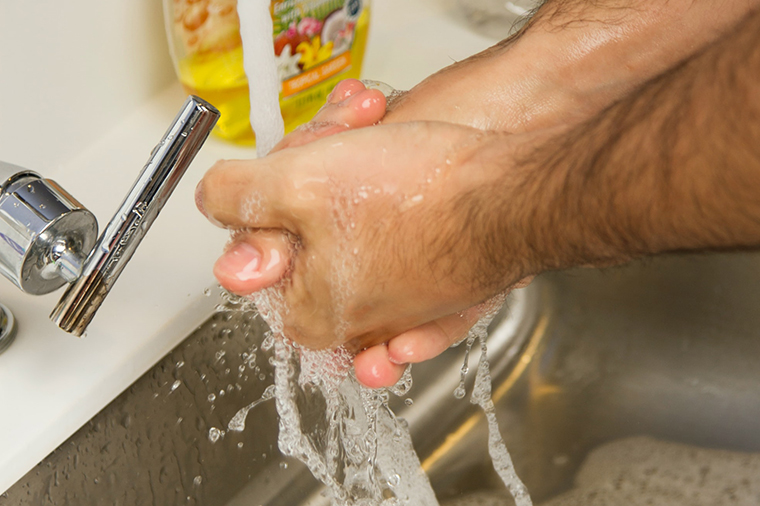Hand sanitiser usage has absolutely rocketed, with a recent report finding "The demand for hand sanitizers has increased by 1400 per cent from December 2019 to February 2020 period." Some companies had even gone so far as to increase hand sanitiser prices by 70% to take advantage of this extreme rise in demand.
People often prefer using sanitiser as opposed to hand wash due to them being easy to use, not needing running water, and comparatively time efficient. This is all well and good as an on-the-go way to keep microorganisms at bay, however what are the implications for those amongst us who are starting to rely on sanitiser instead of hand washing? It has only been recently due to the exponential rise in its use, that scientists have really started to ask the question could hand sanitiser be harming our skin?

High alcohol concentrations (usually 60-90%) mean that ABHS are classified as a Class I Flammable Liquid substance, posing a significant risk of fire accidents. An alternative therefore exists in the form of non-alcohol-based hand sanitiser, or indeed when available, soap and water. All of these associated dangers lead us to believe that without further research into the long-term effects on hand sanitiser on human skin, we should still be using soap and water when it is possible to do so.
In support of this, several studies have found that washing with soap and water provides equivalent results when compared with ABHS at removing or killing viruses such as the noroviruses and other microorganisms. It is definitely worth noting that whilst hand sanitisers kill organisms on hands, only soap and water both kills them and actually washes them off of the skin. Thus in circumstances where hands are visibly contaminated, or even just if hand washing facilities are present, humble soap and water is yet to be replaced. This begs the question, under which other circumstances is soap preferable to sanitiser? And, what are the long-term effects of consistent repetitive use?
The most frequently reported skin conditions linked to hand sanitiser usage are irritant contact dermatitis and allergic contact dermatitis. This essentially means that you can be either allergic to hand sanitiser, or just sensitive to it- both of which will usually cause similar symptoms. These symptoms are usually your skin getting itchy and red after using hand sanitiser due to the body triggering an immune response. This is really similar to coming into contact with poison ivy and is usually mild, however in severe cases there is even cracking and bleeding- a side effect not often discussed!
Other risks carried by use of alcohol-based hand sanitiser (ABHS) stem from its ingredient list. With WHO recommending 80% ethanol, the actual alcohol content we’re putting onto our hands multiple times a day is cause for concern. One study found that blood concentration of ethanol was at 2.3% an hour and a half after using alcohol-based sanitiser. This is a concern as we know that frequently high concentrations of ethanol in human blood leads to short-term and long-term toxicity such as liver cirrhosis. Not only this, continuous application of ethanol on skin is reported to lower the skin barrier’s ability to function, thus rendering this membrane highly susceptible to harmful chemicals in soaps and cosmetics etc.
One more recent and relatively ‘unchecked’ danger of hand sanitisers is the industry standard falling due to the high demand placed on it currently. What does this really look like? Alcohols that are more affordable than ethanol with similar properties have been found in ABHS which is extremely concerning given that these are known to be more lethal if unintentionally digested by children, inhaled or even just put on the skin. Transdermal poisoning from methanol being absorbed through the skin is well reported.
In support of this, several studies have found that washing with soap and water provides equivalent results when compared with ABHS at removing or killing viruses such as the noroviruses and other microorganisms. It is definitely worth noting that whilst hand sanitisers kill organisms on hands, only soap and water both kills them and actually washes them off of the skin. Thus in circumstances where hands are visibly contaminated, or even just if hand washing facilities are present, humble soap and water is yet to be replaced.
Reference List